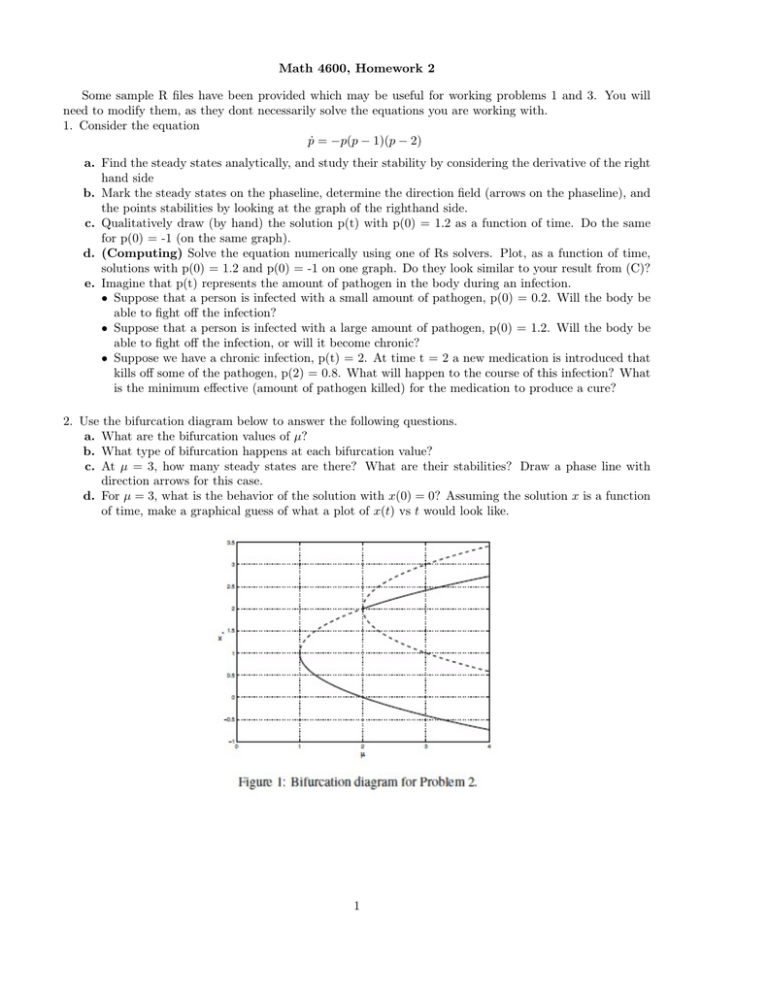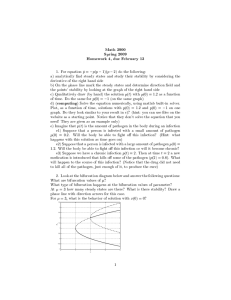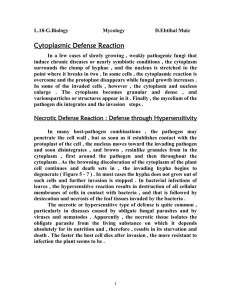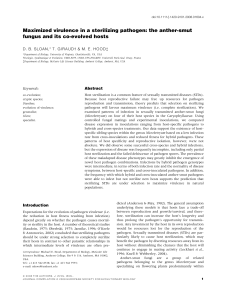Math 4600, Homework 2
advertisement

Math 4600, Homework 2 Some sample R files have been provided which may be useful for working problems 1 and 3. You will need to modify them, as they dont necessarily solve the equations you are working with. 1. Consider the equation ṗ = −p(p − 1)(p − 2) a. Find the steady states analytically, and study their stability by considering the derivative of the right hand side b. Mark the steady states on the phaseline, determine the direction field (arrows on the phaseline), and the points stabilities by looking at the graph of the righthand side. c. Qualitatively draw (by hand) the solution p(t) with p(0) = 1.2 as a function of time. Do the same for p(0) = -1 (on the same graph). d. (Computing) Solve the equation numerically using one of Rs solvers. Plot, as a function of time, solutions with p(0) = 1.2 and p(0) = -1 on one graph. Do they look similar to your result from (C)? e. Imagine that p(t) represents the amount of pathogen in the body during an infection. • Suppose that a person is infected with a small amount of pathogen, p(0) = 0.2. Will the body be able to fight off the infection? • Suppose that a person is infected with a large amount of pathogen, p(0) = 1.2. Will the body be able to fight off the infection, or will it become chronic? • Suppose we have a chronic infection, p(t) = 2. At time t = 2 a new medication is introduced that kills off some of the pathogen, p(2) = 0.8. What will happen to the course of this infection? What is the minimum effective (amount of pathogen killed) for the medication to produce a cure? 2. Use the bifurcation diagram below to answer the following questions. a. What are the bifurcation values of µ? b. What type of bifurcation happens at each bifurcation value? c. At µ = 3, how many steady states are there? What are their stabilities? Draw a phase line with direction arrows for this case. d. For µ = 3, what is the behavior of the solution with x(0) = 0? Assuming the solution x is a function of time, make a graphical guess of what a plot of x(t) vs t would look like. 1 3. Consider the following system ẋ = x2 − x − y ẏ = x − y a. Find the fixed points and classify their stabilities. b. Draw the phase plane by hand, indicating nullclines and fixed points. Sketch a few representative trajectories. c. (Computing) Solve this system numerically in R, starting with (x(0), y(0)) = (−0.3; −0.3) for time t from 0 to 10. Plot the solution in the phase plane and also as a function of time. Dont forget to label axes and include a legend. 2








![Bifurcation theory: Problems I [1.1] Prove that the system ˙x = −x](http://s2.studylib.net/store/data/012116697_1-385958dc0fe8184114bd594c3618e6f4-300x300.png)


